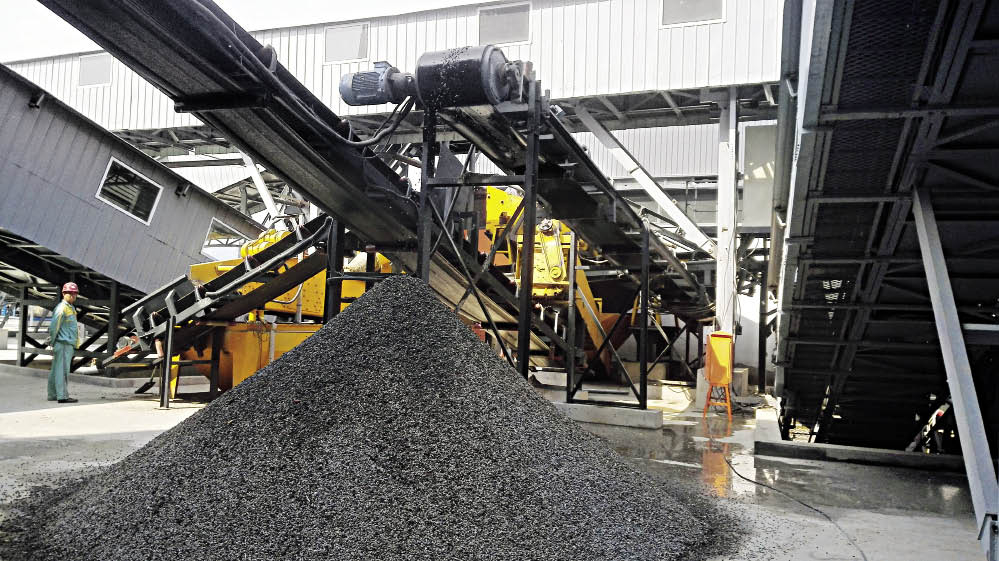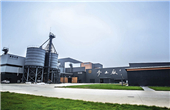Transfrom Construction Waste into Resources
China Today by Dang Xiaofei, October 13, 2016 Adjust font size:
Zero Emissions
Wide streets, exotic blooming flowers, sturdy trees, and tweeting birds... no one would imagine this could be a factory location if it weren’t for the distant buzz of machinery.
However, the hum can only be heard inside the workshops, as all houses are wrapped in an external layer of sound-absorbent panels. “No dust, odor or smoke is emitted during the process of crushing and decomposition,” Yuantaida’s chief scientist Dr. Zhang Ying said. “Test results show that all emissions are well below the minimum standard.”

Construction waste processed into sand.
Sewage produced in the plant can be 100 percent recycled. “Sewage is produced in two procedures. One is to produce recycled gravel. We separate the dirt and water, and press the dirt sediment into the mud pastry to make ceramsites,” Wu Sheng said. “The other procedure produces concrete, but we use machines to separate the water and gravel.”
In fact, Yuantaida has realized three 100-percents: All construction waste, after separation and processing, is transformed into recyclable, environmentally friendly materials; The entire production procedure conforms to environmental protection standards; All recycled products, after being tested in a large number of construction projects, conform to industrial standards and are therefore welcomed by the market.
“The core technologies for achieving the three 100-percents are developed independently, from waste processing to application of recycled products,” Wu Sheng said. “Since 2006 my company has invested up to RMB 100 million annually in R&D.”
Yuantaida has an annual capacity for processing as much as 1.5 million tons of construction waste, which is equivalent to saving 20,000 tons of standard coal, and reducing 30,000 tons of CO2 emissions. Since the Chinese government supports construction waste disposal, Yuantaida can obtain subsidies of as much as RMB 3 million a year.
However, this subsidy is dwarfed by the company’s annual sales of RMB 500 million. As regards future developments, Wu said: “The company plans to set up construction waste disposal plants in 300 medium-sized or large cities. Our short-term plan is to find pilot cities suitable for construction waste disposal, and gradually promote their experience nationwide.”

